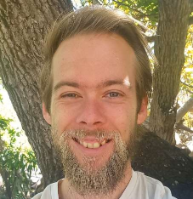For many people, talking about movies is just as much fun as watching them. When movie lovers, or film buffs (fans), discuss their favourite flicks (movies), they often use lots of jargon. It’s no fun to be left behind in any conversation, especially not when it’s about something you love. So if you want to master the language of cinema, read on!
Since the best way to learn any language is to use it, let’s explore some cinema vocabulary by looking over a movie, one of my absolute favourites: Star Wars Episode I – The Phantom Menace.
Fun fact: did you know that the term “movie” (short for “moving picture”) originally referred to silent films? For a brief period after sound was introduced, films where you can hear the actors talking were called “talkies”.

You are most likely at least aware of the Star Wars movies, an epic series or saga that spans multiple generations, both in our world and in the galaxy far, far away. Many people will say these are science-fiction movies, but if you look at it more closely you’ll see that its true genre is fantasy.
The original Star Wars hit theaters in 1977 and was a huge success at the box office, meaning it made a very big profit in ticket sales, more than $775 million! Star Wars did so well that it was followed by a sequel, the next movie in the series The Empire Strikes Back, and in 1983 became a complete trilogy with the third and then final addition, Return of the Jedi. Recently the Disney company bought the franchise and made a whole sequel trilogy and several spin-offs, movies and TV series that take place in the same universe but that do not follow the main story of the original saga. But the movie we’re talking about today is the first of the prequels, the stories that take place before the events of the original Star Wars.
The man behind the myth, George Lucas, began writing the screenplay—the text containing the narrative (story), settings (locations), actors’ dialogue (words), and some basic camera directions—for The Phantom Menace in 1993, six years before the movie’s release. Lucas wanted to wait until technology was advanced enough to allow him to use CGI, “computer generated imagery”, for special effects and to create sets for the drama to take place in that couldn’t be physically built.

The Galactic Republic’s Senate Chamber on the city planet, Coruscant.
(Star Wars: Episode I – The Phantom Menace (1999). Photo credit: Lucasfilm & Disney.)
The senate chamber of the Galactic Republic is a prime example of a set that would be awfully difficult to construct in the real world, but through the magic of computers the audience was transported into the impressive seat of the galaxy’s central government. Although the initial critical reception, the movie’s reviews, to The Phantom Menace was very positive, a few very vocal critics—professional and not—quickly and harshly laid into the latest entry in the Star Wars saga. One of the most prominent complaints was the overuse of CGI, despite The Phantom Menace using even more practical effects—real life sets, costumes, props (an inanimate object that appears in films) and explosions—than the original Star Wars. One of my favourite practical effects is the use of colourfully painted earbuds jostled from underneath by a fan to create the illusion of people moving around the stands in wide-shots (camera shots from far away) of the movie’s famous race track.
What’s your English level?
Find out by completing one of our level tests!
What’s your English level?
Find out by completing one of our level tests!

The podracing track’s stands on the desert planet, Tatooine.
(Star Wars: Episode I – The Phantom Menace (1999). Photo credit: Lucasfilm & Disney.)
Speaking of practical effects, another thing The Phantom Menace is loved for is the exquisite costuming. Seamstresses (dressmakers) spent months hand-crafting the thousands of garments worn by the actors and extras (even the background characters were dressed to kill). Where the original trilogy’s costumes reflected a culturally oppressed galaxy, the clothes worn in the prequels show off galactic culture at its height; it’s only appropriate that pieces of antique gowns and real gold went into these costumes. Can you imagine the budget!
Fun fact: the costume designer for the 1993 film Schindler’s List relied on advertisements to gather enough costumes from the public to clothe 20,000 extras!

A few of Queen Amidala’s many luxurious costumes.
(Star Wars: Episode I – The Phantom Menace (1999). Photo credit: Lucasfilm & Disney.)
Costumes are nothing without a cast, however: the people playing the characters give these pieces of wearable art life as much as the costumes help them get into character. And what a cast it was, with the likes of Natalie Portman, Ewan McGreggor, Liam Neeson, and Ian McDiarmid, they couldn’t have found better actors for their respective roles. Usually a movie is framed from the perspective of a particular character, but The Phantom Menace has more of an ensemble cast which frames it from multiple points of view.
Of course, the Star Wars movies aren’t exactly known for their amazing dialogue and it’s no secret that Georgle Lucas might not be the best director: a lot of the time his directions were limited to a few words that didn’t help the actors all that much with their delivery, leading to some awkwardly said lines. But one thing’s for sure: George Lucas is a master of the visual medium who can compose shots like renaissance paintings. Using all the tools at his disposal—set dressing (the props and furniture in each location), lighting (artificial and natural light used in different ways), colour theory (the way different colours interact to compose a shot or set a particular mood), various camera angles and movements such as wide-shots, close-ups, panning (moving the camera from one area to another), and creative transitions between scenes—Lucas showcases his expertise as a cinematographer.

A beautiful sunset on Coruscant shared by the characters Qui-Gon Jinn and Obi-Wan Kenobi.
(Star Wars: Episode I – The Phantom Menace (1999). Photo credit: Lucasfilm & Disney.)
And let’s not forget musical composer John Williams’ phenomenal score (written musical composition). Where Lucas tells the story through visuals and dialogue, Williams does so with sound. Each musical piece helps to set the tone, supports the action, and tells us more about the story.
Fun fact: before “talkies”, movie soundtracks were performed live in cinemas.
You can get a feel for the visual and musical mastery by watching the movie’s trailer, but it’s only a taste of the real deal!

This article was written by Break Into English’s online teacher and blog contributor Johann Potgieter.
Follow us on Social Media




